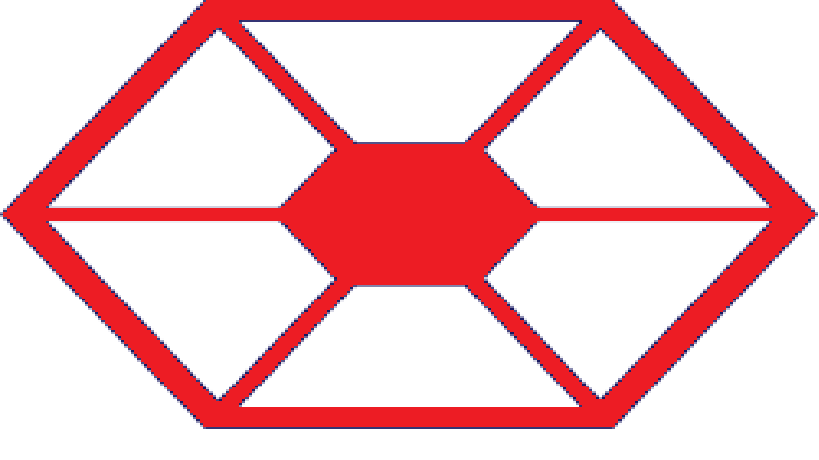- Confederation Of Independent Systems
- The Confederacy Of Independent Syste…
- Confederacy Of Independent Systems Wiki
The examples and perspective in this article deal primarily with Western culture and do not represent a of the subject. You may, discuss the issue on the, or, as appropriate.
( June 2019) Part of thePower structure.(power of many).(power of few).(power of one).(power of none).Power ideologyvs.(socio-political ideologies).vs.(socio-economic ideologies).vs.(geo-cultural ideologies).A confederation (also known as a confederacy or league) is a union of sovereign states, united for purposes of common action often in relation to other states. Usually created by a, confederations of states tend to be established for dealing with critical issues, such as defense, foreign relations, internal trade or currency, with the being required to provide support for all its members. Confederalism represents a main form of inter-governmentalism, this being defined as any form of interaction between states which takes place on the basis of sovereign independence or government.The nature of the relationship among the member states constituting a confederation varies considerably. Likewise, the relationship between the member states and the general government, and the distribution of powers among them is highly variable. Some looser confederations are similar to. Other confederations with stricter rules may resemble.Since the member states of a confederation retain their sovereignty, they have an implicit right of.
Political philosopher Emmerich Vattel observed: ‘Several sovereign and independent states may unite themselves together by a perpetual confederacy without each in particular ceasing to be a perfect state. The deliberations in common will offer no violence to the sovereignty of each member’.Under a confederal arrangement, in contrast with a one, the central authority is relatively weak. Decisions made by the general government in a unicameral legislature, a council of the member states, require subsequent implementation by the member states to take effect.
They are therefore not laws acting directly upon the individual, but instead have more the character of inter-state agreements. Also, decision-making in the general government usually proceeds by consensus (unanimity) and not by majority, which makes for a slow and inefficient government. These problematic features, limiting the effectiveness of the union, mean that political pressure tends to build over time for the transition to a, as happened in the American, Swiss, German and European cases of regional integration. Map of the (from the )In the context of the history of the, a confederacy may refer to a semi-permanent political and military alliance consisting of multiple nations (or 'tribes', 'bands', or 'villages') which maintained their separate leadership. One of the most well-known is the (or Iroquois), but there were many others during different eras and locations across; these include the, and.The Haudenosaunee Confederacy, historically known as the Iroquois League or the League of Five—later, Six—Nations, is the country of (in what is now the United States) and (in what is now Canada) that consists of six nations: the, the, the, the, the and the. The Six Nations have a representative government known as the Grand Council which is the oldest governmental institution still maintaining its original form in North America. Each clan from the five nations sends chiefs to act as representatives and make decisions for the whole confederation.


The League has been operating since its foundation in 1142 CE despite limited international recognition today. In fact, Haudenosaunee issues passports for its citizens, though travellers often face problems crossing State borders.Serbia and Montenegro (Federal Republic of Yugoslavia) was a confederation that was formed by the two remaining republics of the (SFR Yugoslavia): and neighboring. The country was reconstituted as a very loose which was established on 4 February 2003.As a confederation , Serbia and Montenegro were united only in very few realms, such as defense, foreign affairs and a very weak common president of the confederation. The two constituent republics functioned separately throughout the period of its short existence, and continued to operate under separate economic policies, as well as using separate currencies (the was and still is the only legal tender in Montenegro, while the was still the legal tender in Serbia).
On 21 May 2006, the was held. Final official results indicated on 31 May that 55.5% of voters voted in favor of independence. The confederation of Yugoslavia effectively came to an end after Montenegro's formal declaration of independence on 3 June 2006, and Serbia's formal declaration of independence on 5 June.Switzerland , officially known as the Swiss Confederation, is an example of a modern country that traditionally refers to itself as a confederation.
This is due to the fact that the official (and traditional) name of Switzerland in German (the majority language of the Swiss) is Schweizerische Eidgenossenschaft (literally 'Swiss Comradeship by Oath'), an expression which was translated into the Latin Confoederatio Helvetica (Helvetic Confederation). It had been a confederacy since its inception in 1291 as the, originally created as an alliance among the valley communities of the central Alps, and retains nowadays the name of Confederacy for reasons of historical tradition. The confederacy facilitated management of common interests (e.g.
Freedom from external domination, especially by the, development of republican institutions in a Europe composed of monarchies, free trade, etc.) and ensured peace between the different cultural entities in the central alpine area.After the of 1847, when some of the Catholic cantons of Switzerland tried to set up a separate union ( Sonderbund in German) against the Protestant majority, the resulting political system established by the victorious Protestant cantons acquired all the characteristics of a.
Confederation Of Independent Systems
THREE SYSTEMS OF GOVERNMENTSystemLevel of CentralizationStrengthWeaknessUnitary (e.g., China, France, Japan, UnitedKingdom)HighSets uniform policies that direct the entirenationDisregards local differencesFederal (e.g., United States, Germany, Australia,Canada)MediumGives local governments more powerSacrifices national uniformity on someissuesConfederate (e.g., Confederate States of America,Belgium)LowGives local/regional governments almost completecontrolSets no significant uniform nationalpoliciesUnitary SystemsA unitary system has the highest degree of centralization. Ina unitary state, the central government holds all the power.

The Confederacy Of Independent Syste…
Lower-levelgovernments, if they exist at all, do nothing but implement the policies of thenational government. In a purely unitary state, the same set of laws appliesthroughout the nation, without variation. Unitary states create national policy,which is then applied uniformly. This uniformity sometimes serves as anadvantage because people and businesses know exactly what to expect from thelaws, regardless of geographical location. At the same time, to maintain itsuniformity, a unitary government must overlook local differences that might callfor different rules or policies.Example: Most absolute monarchies andtyrannies operate under unitary systems. But democratic unitary states existas well. In France, for example, the central government makes virtually allof the decisions.
Federal SystemsA federal system has a mix of national and state or localgov- ernments. The federal government usually trumps local governments inmatters of defense and foreign policy, but local governments have a great dealof say over most other policy areas. Sometimes local governments administernational policies, which means that, in practice, the “national” policy varies agreat deal from place to place.Example: In the United States, stategovernments administered Aid to Families with Dependent Children (AFDC)throughout the length of the program, 1935–1997. Although the federalgovernment set certain rules for how the money was to be spent, stategovernments had the power to administer it as they saw fit.
Some states,therefore, gave little money through AFDC, whereas others were much moregenerous.Often, the boundary between national and local power is blurred. Federalsystems have the opposite strengths and weaknesses of unitary systems: Theyexcel at factoring in local circumstances but often fail to have a coherentnational policy.Example: The United States, Mexico,and Canada operate under federal systems. These states have a mix ofnational and state governments that share power and policymakingresponsibilities.
Confederacy Of Independent Systems Wiki
Confederate SystemsA confederate system sits at the other extreme in terms of centralization.A confederacy is a loose relationship among a number of smaller political units.The vast majority of political power rests with the local governments; thecentral federal government has very little power. Local governments have a greatdeal of freedom to act as they wish, but this freedom often leads to conflictsbetween states and the federal government. In some cases, a confederacy islittle more than an alliance between independent states.Example: For Americans, theConfederate States of America—which governed the South during the CivilWar—is the best-known example of a confederacy, but there have been others.In fact, the first government of the United States, created by the Articlesof Confederation (finished in 1777), was this type of system. Today, Belgiumis basically a confederacy between two largely independent states, Flandersin the north and Wallonia in the south.